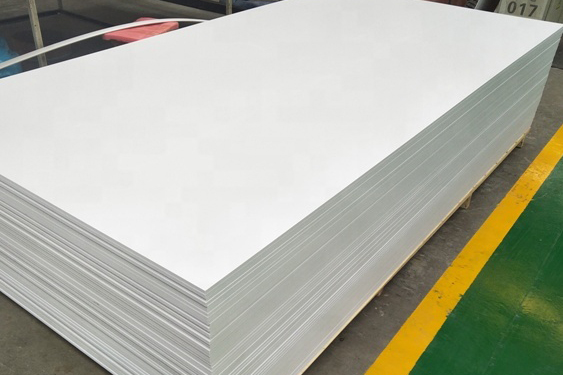PVC foam board is a versatile material that is widely used for signage, displays, and other visual communications. Its lightweight, rigid construction and smooth surface make it an excellent substrate for printing.

Understanding PVC Foam Board
PVC foam board is composed of a rigid PVC foam core sandwiched between two smooth PVC surface sheets. This structure provides excellent dimensional stability, durability, and resistance to moisture and chemicals. The smooth surface of the PVC foam board ensures optimal ink adhesion and vibrant color reproduction.
Printing Techniques
Several printing methods can be used to print on PVC foam board, including:
Digital Printing: Digital printing offers high-quality, full-color images and is ideal for short-run and customized applications. It allows for quick turnaround times and the ability to print variable data.
Screen Printing: Screen printing is a traditional method that is well-suited for large-format prints and repetitive designs. It produces thick, durable ink deposits and is often used for outdoor signage.
UV Curing: UV curing is a digital printing process that uses ultraviolet light to instantly cure the ink, resulting in a durable and scratch-resistant finish. It is an excellent choice for applications that require a high level of durability.
Solvent-Based Inkjet: Solvent-based inkjet printing is another popular method for printing on PVC foam board. It offers high-quality images and is suitable for both indoor and outdoor applications.
Combining PVC Foam Board with PET Backlit Film
PET backlit film is a translucent material that is often used in conjunction with PVC foam board to create illuminated displays. The film is placed between the printed graphic and a light source, allowing the image to glow from behind. This combination provides a striking visual effect and is commonly used for lightboxes, trade show displays, and point-of-sale signage.
The process typically involves:
1. Printing: The desired graphic is printed onto the PVC foam board using the chosen printing method.
2. Lamination: The printed PVC foam board is laminated with a protective layer to enhance durability and protect the ink.
3. Installation of PET Backlit Film: The PET backlit film is adhered to the back of the PVC foam board, covering the entire printed area.
4. Installation of Light Source: A light source, such as LED lights, is placed behind the PET backlit film to illuminate the graphic.
Considerations for Printing on PVC Foam Board
Substrate Thickness: The thickness of the PVC foam board will affect its rigidity and durability. Thicker boards are better suited for larger and heavier applications.
Ink Compatibility: Ensure that the chosen ink is compatible with the PVC foam board and the printing method.
Image Resolution: For optimal results, provide high-resolution images with sufficient detail.
Color Matching: Work closely with your printer to ensure accurate color matching.
Finishing Options: Consider additional finishing options such as lamination, UV coating, or mounting for added protection and durability.
Applications of PVC Foam Board and PET Backlit Film
Signage: Indoor and outdoor signage, including point-of-sale displays, trade show exhibits, and directional signage.
Lightboxes: Illuminated displays for retail stores, restaurants, and public spaces.
Exhibits: Trade show displays, museum exhibits, and event signage.
Prototyping: Creating prototypes for products or packaging.
PVC foam board, when combined with PET backlit film, offers a versatile and effective solution for creating eye-catching visual displays. By carefully considering the printing technique, substrate thickness, and other factors, you can achieve stunning results that will make your message stand out.
